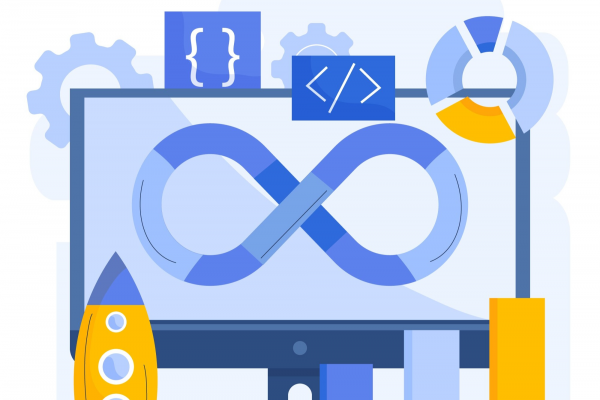Entrepreneurs and businesses launch a thousand brand-new software products every year. While many of them do succeed, a large number of them also fail as they are misaligned on pricing versus value, built poorly or incorrectly, do not appeal to a wide-enough audience, and so on. Even well-established companies can deliver underwhelming products. Focusing on a product engineering mindset is one way to increase the likelihood that software products will be well-liked by the target audience. Product engineering services in the USA provide a comprehensive framework that helps companies maximize the value they get from software throughout its lifecycle.
What is meant by product engineering?
Product Engineering implies the process of designing, innovating, developing, testing, and ultimately deploying a software product. With the advent of utility-based software delivery through SaaS and Web 2.0 technologies, the gradual transformation of client-enabling engineering services from more traditional approaches to agile product engineering has been witnessed. Product engineering takes care of the entire product life cycle.
The product engineering services market size was valued at USD 950 billion in the year 2022. It is anticipated to grow at a CAGR of over 5% between 2023 and 2032, driven by growing demand for accelerating TTM, or Time to market, so as to facilitate faster product deliveries. The growing need for consistent innovation and iteration, lowered production expenses, and increasing demand for smart homes are some of the prime factors fueling the growth of the product engineering service market.
Production Engineering Services: Key to Meeting Customer Expectations
Consumer expectations are always changing and evolving. Product engineering services are focused on enabling companies to create software that consumers actually like and wish to purchase. Product engineering services encompass the whole lifecycle of a product, from its conceptualization to deployment. By leveraging reliable Product engineering services in the USA, companies can create user-centric, technologically advanced, and innovative products that resonate with the target audience and provide a seamless experience.
In this ever-evolving market, product engineering services can provide a much-needed competitive advantage to businesses and help them adapt swiftly. These services are often at the forefront of driving innovation, whether by integrating AI to enhance product functionality, using data analytics to gain valuable insights, or implementing cloud-based solutions for seamless scalability.
Prime Areas of Product Engineering
- Developing new products: To succeed in today’s competitive market, companies must continually innovate and create new products that cater to societal trends and appeal to changing customer demands. Product design is never easy. Before deploying software, it must be prototyped and undergo multiple testing and quality assurance processes. Software development requires design thinking, group testing, technology architecture, and various other efforts that must work together. A sound strategy and proper Product engineering services in the USA are critical to getting new products to market.
- Transforming legacy products: All companies age with time, and so do their products and technologies. Creating a certain platform or product from scratch is not always feasible. In this situation, upgrading an existing legacy product with the help of app modernization would be smart.
It is vital to understand that legacy transformation and product creation do not occur in a vacuum. Companies may create several disjointed systems over their lifetimes. Making efforts to upgrade and modernize such systems is an important aspect of product engineering.
Advantages of Product Engineering Services
Software development is an important catalyst for innovation and growth. Hence, Product engineering services in the USA can indeed prove to be of immense value for a business. It allows companies to supercharge their software development processes to a great extent and stay ahead of the curve by harnessing the resources, knowledge, and expertise of specialized engineering teams.
- Accelerated time-to-market: Time is of the essence in today’s highly competitive world. Top product engineering service providers allow their clients to considerably cut down time-to-market by employing a streamlined development process and agile methodologies. They can provide assurance of rapid software delivery without compromising on quality. Such an accelerated pace allows businesses to make the best possible use of market opportunities.
- Advanced technologies and innovation: Product engineering service providers foster a culture of innovation and explore a variety of cutting-edge technologies. They often incorporate cutting-edge technologies like cloud computing, machine learning, and AI into their product engineering solutions to create scalable, agile, and future-ready products that are suited to evolving customer demands.
- Improved ROU and cost optimization: Product engineering services are provided with the goal of maximizing ROI while maintaining consistency in product output. With their industry experience and expertise, service providers can make informed decisions regarding resource allocation, development processes, and technology choices, ensuring optimal cost efficiency in the process.
- User-centric design: The user experience takes center stage in the product engineering process. Such solutions put emphasis on user-centric design and create engaging and intuitive interfaces that delight users and improve product adoption. Processes like iterative design cycles, usability testing, and extensive user research are undertaken to create software that resonates with the target audience.
Wrapping Up
In a world driven by ever-changing consumer preferences and constant tech advancements, availing the assistance of a reliable provider of Product engineering services in the USA like STL Digital is immensely important. Their team has strong product lifecycle management skills and offers competent product management and engineering solutions. STL Digital can engineer digital platforms for new business models or efficiently rejuvenate existing models.
FAQs
- Is product engineering different from product design?
Yes. Product engineering is different from product design. While the latter largely focuses on the aesthetics and user experience of software, product engineering goes way beyond that. It ensures that software is not just visually appealing but also functional, reliable, and efficient. Product engineering involves translating design concepts into completed products, addressing engineering challenges, and refining the design based on practical considerations.
- What are the phases of product engineering?
- Ideation (Conceptualization): The product idea is conceptualized and verified based on its specifications and feasibility.
- Product Architecture: Functional elements, flows, blocks, and components of the products are planned.
- Designing and Developing: This stage focuses on UX design and product development.
- Product Testing: Once the product is developed, it has to be tested based on various parameters to ensure that it meets the expected standards of product engineering.
- Product launch and deployment: Once the development team and business leaders are satisfied with the product, it is launched in the market.
- What is the duration of product engineering, and how much do such services cost?
The time needed to design, develop, test, and deploy software would depend on the specific requirements to be met. The same is applicable for the cost of product engineering services. It would largely depend on the technology stack used, as well as the type of resources and expertise involved in the process.
- What is meant by end-to-end product engineering?
End-to-end product engineering implies a comprehensive approach that covers the whole lifecycle of a product, right from its conceptualization and design to development and even post-production support. End-to-end product engineering often includes the integration of engineering disciplines, like IT services, hardware, software, and embedded systems, to create a complete and functional product.



